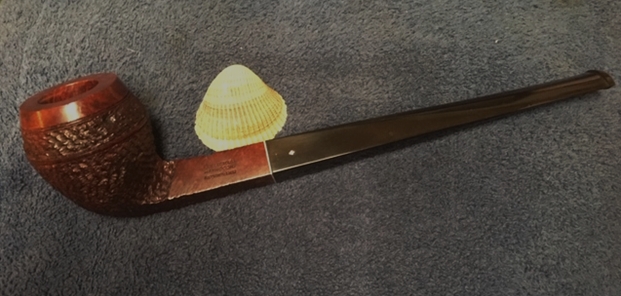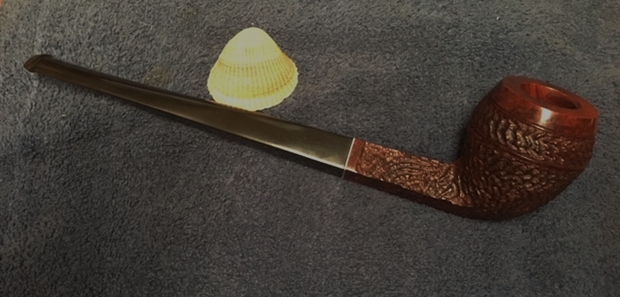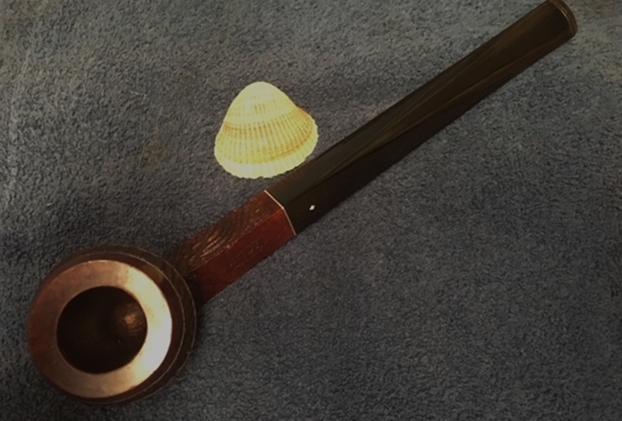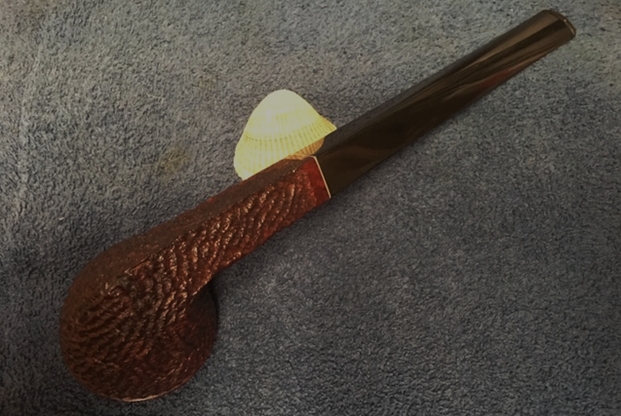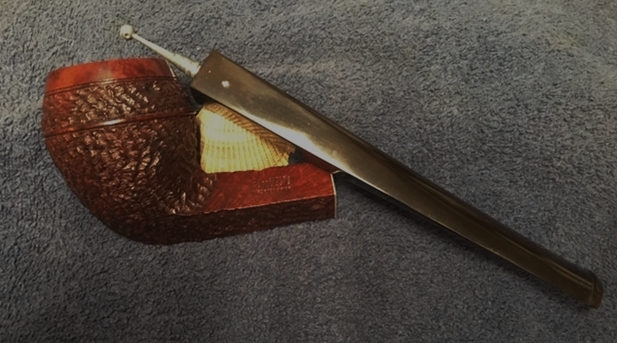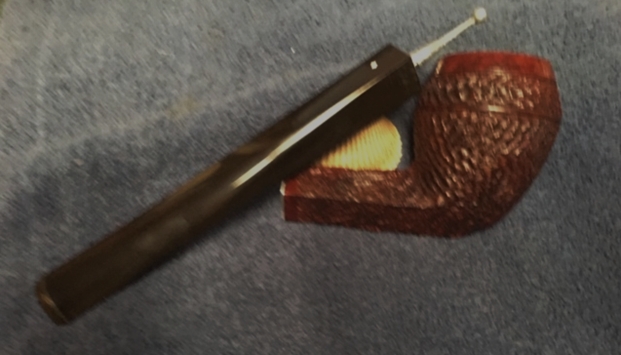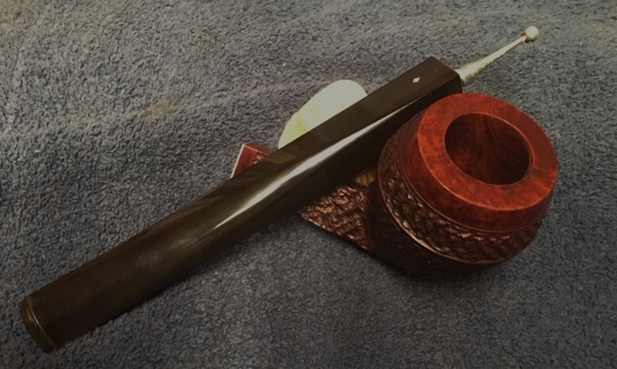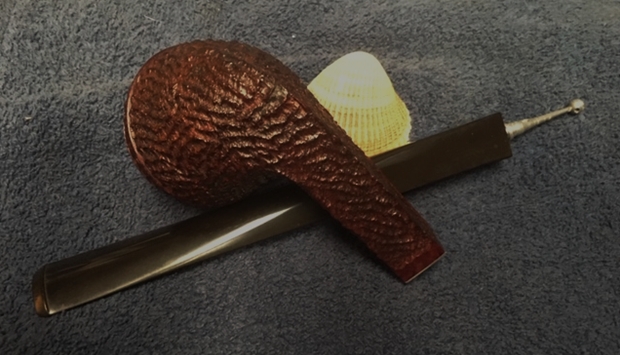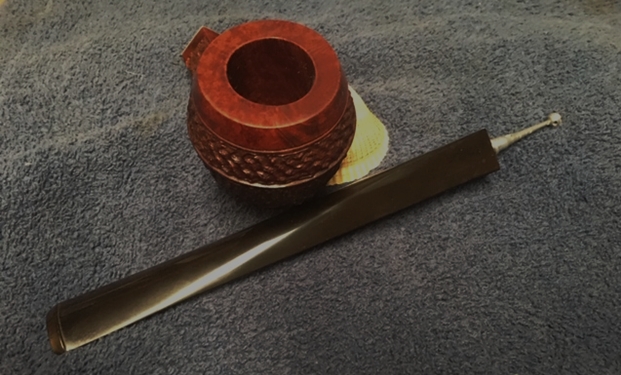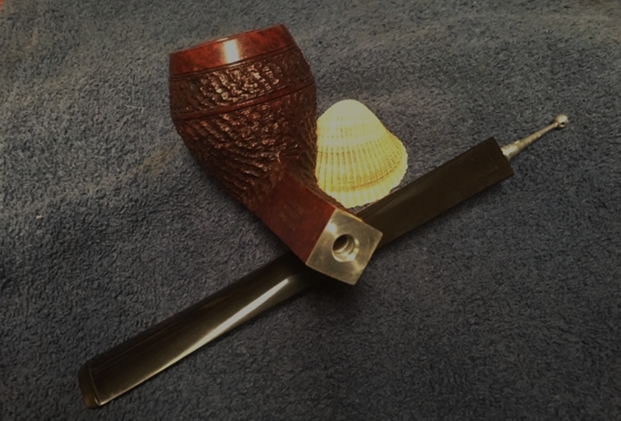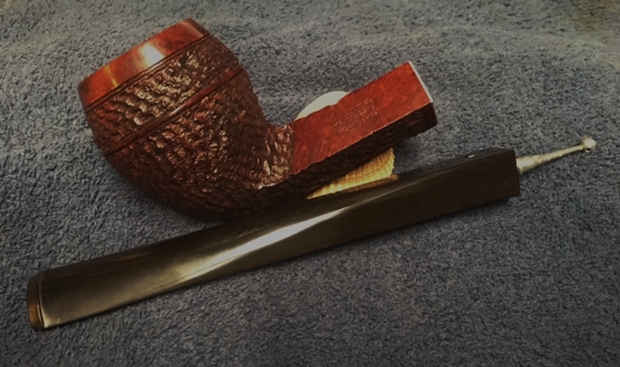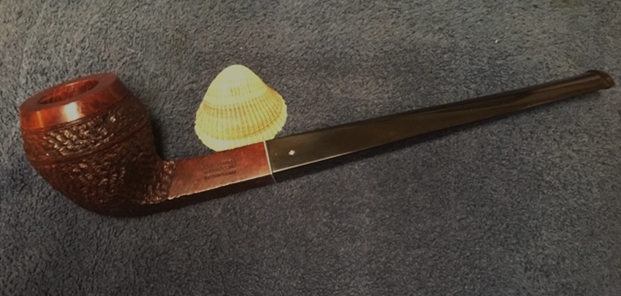Blog by Steve Laug
This is one big pipe that came to me in an estate that I purchased from a fellow in Arizona. When I looked over the pipes he was selling with my brother I don’t think the size of this brute really registered with us. It was just another larger Kaywoodie Bulldog. The stamping on the left side of the shank which read Collector’s Kaywoodie Imported Briar did not mean anything to me at this point in the process. It had a rugged sandblast finish that was a large and craggy as the pipe itself. It had a smooth rim top, a smooth top ring and sandblast ring between that and a second ring around the bowl. The bowl was dusty but I was amazed that it was unsmoked and showed a well grained and STAINED bowl interior. There was a spacer on the shank that separated the bowl from the stem and contained the threaded mortise insert for a Kaywoodie threaded stinger. The stem was lightly oxidized and had some water spots that had oxidized spots on the stem. There was some light tooth chatter on the button end on both sides that must have come from people “trying the pipe on”. It had the Kaywoodie Club insert on the left side of the stem. When I unscrewed the stem it had a large four hole stinger. The aluminum was dull from having been sitting. I took photos of the pipe before I started my cleanup process to show the condition it was in when we received it. I included the moon rock finished pipe that I just finished in the photo to give a sense of the massiveness of this pipe. The moon rock is a little over 5 ½ inches long and 1 ¾ inches tall. It is an average sized pipe that is dwarfed by this monster. The Kaywoodie is truly one I would call a magnum pipe.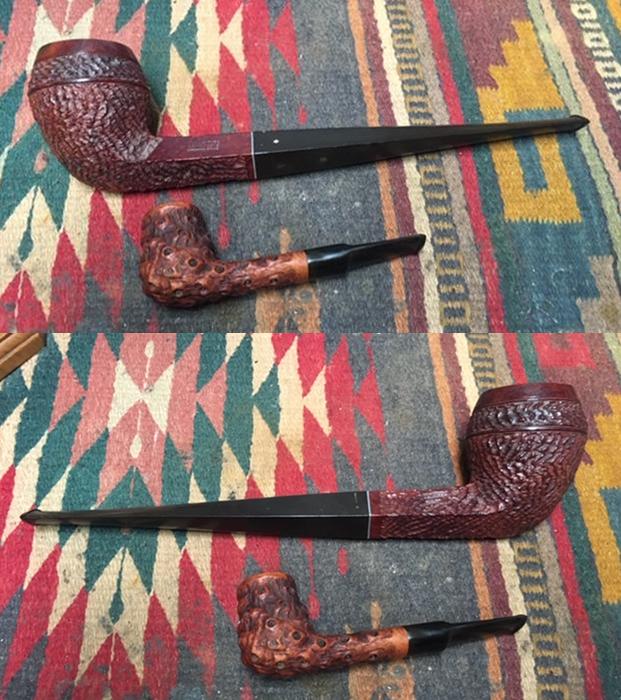
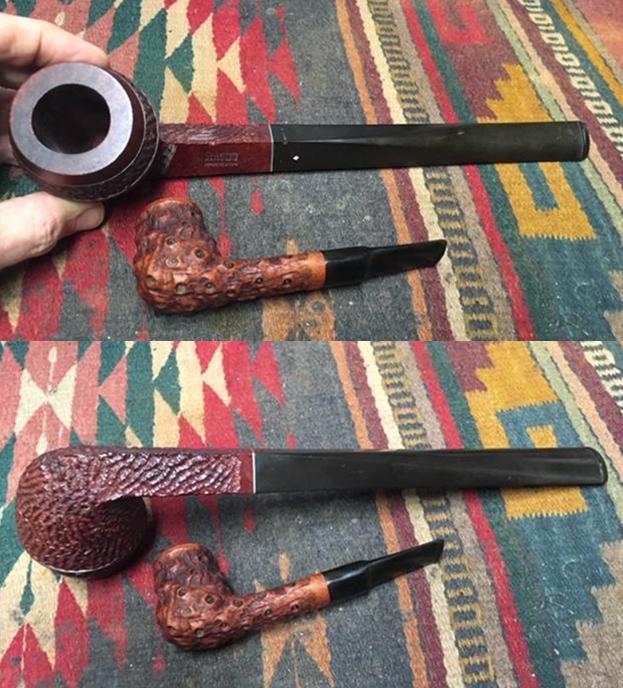 I was unfamiliar with the Collector’s line so I did some digging and had Jeff do the same to see what we could come up with on the brand. I found it listed on the Pipephil site but the pipe shown was obviously a newer one and I found a matching pipe on eBay that showed that it had a three hole stinger. That one was dated as a 1960s era pipe which fits the stinger arrangement on the threaded tenon.
I was unfamiliar with the Collector’s line so I did some digging and had Jeff do the same to see what we could come up with on the brand. I found it listed on the Pipephil site but the pipe shown was obviously a newer one and I found a matching pipe on eBay that showed that it had a three hole stinger. That one was dated as a 1960s era pipe which fits the stinger arrangement on the threaded tenon.
Jeff found a listing on eBay for a 10 inch long Collector Billiard that bore the same stamping as the one I have and had a four hole stinger. The seller described it as “One Very Rare Magnum and a True Kaywoodie Collectors 10 Inch Long pipe.” He went on to say that even to see a Kaywoodie Magnum Smooth Cross Cut Swirled Smooth Grained that is an Extra Large Series of the Collector’s Billard is rare. He dates the pipe to 1951-1954 which is where I would place the one that I have in my hand. This pipe is new – truly NOS that is in excellent condition and though it is large, it feels light and well balanced in the hand. The sandblast finish is very tactile and feels good but I think it would even feel more amazing with fire in the bowl. This huge magnum is 11 inches long and over 3 inches tall. It is a true Magnum Sized pipe. The craggy grained sandblast finish holds a perfectly drilled and centered airway in the bottom of the bowl. The long, large Drinkless Balled Kaywoodie 4 Hole Stinger System is flawless and the stem aligns perfectly.
I took a photo of the top of the bowl to show the condition of the rim and the unsmoked bowl. The rim top had a bit of grime from sitting unused for the past 64+ years. The photos of the stamping and Kaywoodie Club logo show the condition of the rest of the pipe. The nomenclature is crisp and readable. The Club is in good condition. The photos of the stem show the light oxidation and what I called tooth chatter from people “trying on the pipe”. 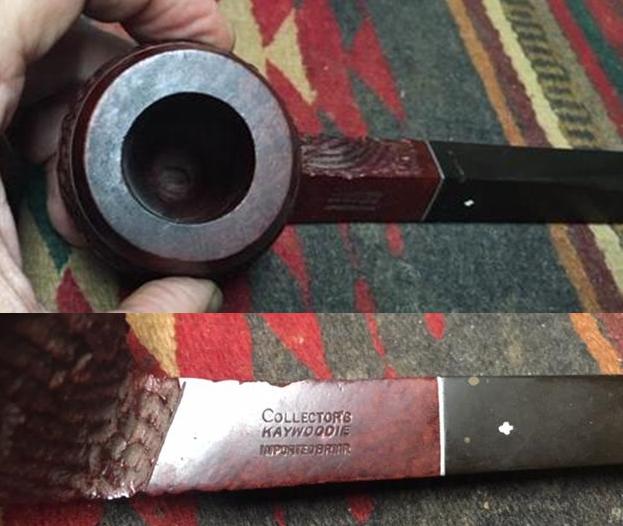
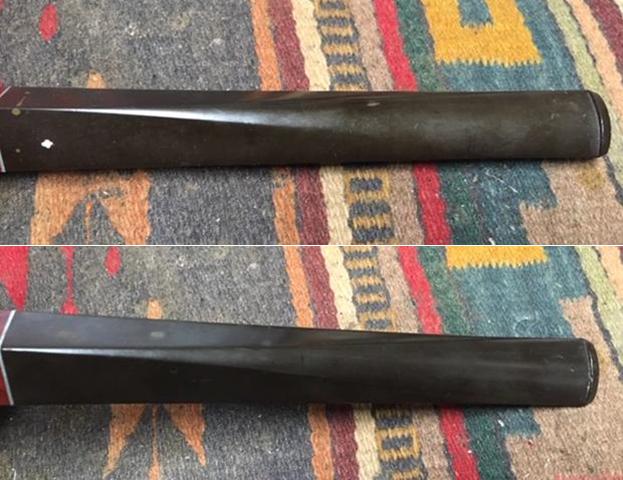 I unscrewed the stem from the mortise to have a look at the stinger and tenon apparatus. I took photos of the set up to show the condition of the internals of the pipe.
I unscrewed the stem from the mortise to have a look at the stinger and tenon apparatus. I took photos of the set up to show the condition of the internals of the pipe.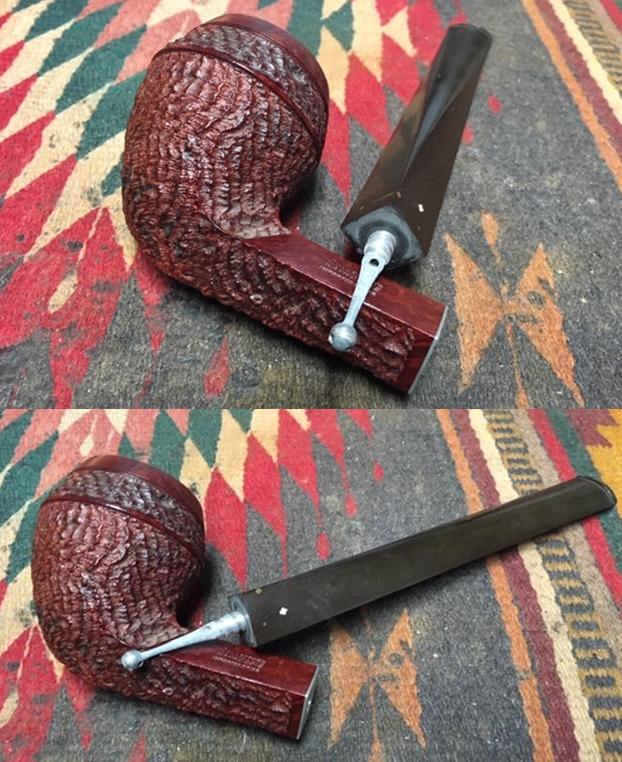 I started my restoration of this pipe by rubbing the bowl down with Before & After Restoration Balm to deep clean the briar bowl and the rim top as well as the briar shank. The product works to clean, enliven and protect the briar. I hand rubbed it with my fingers, working it into the exterior of the pipe. I worked it into the sandblasted surface of the briar with a horsehair shoe brush. After it had been sitting for a little while, I buffed it with a soft cloth to polish it. The pipe really began to have a rich shine. I took some photos of the bowl at this point to mark the progress in the restoration.
I started my restoration of this pipe by rubbing the bowl down with Before & After Restoration Balm to deep clean the briar bowl and the rim top as well as the briar shank. The product works to clean, enliven and protect the briar. I hand rubbed it with my fingers, working it into the exterior of the pipe. I worked it into the sandblasted surface of the briar with a horsehair shoe brush. After it had been sitting for a little while, I buffed it with a soft cloth to polish it. The pipe really began to have a rich shine. I took some photos of the bowl at this point to mark the progress in the restoration.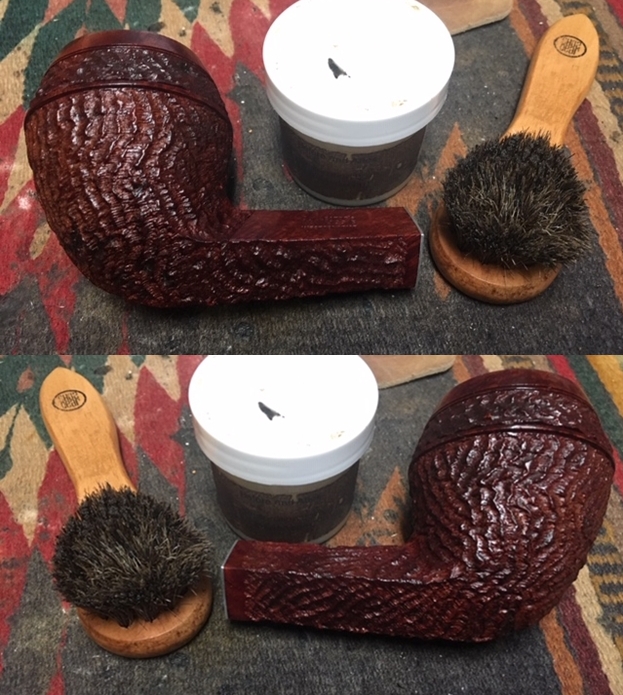
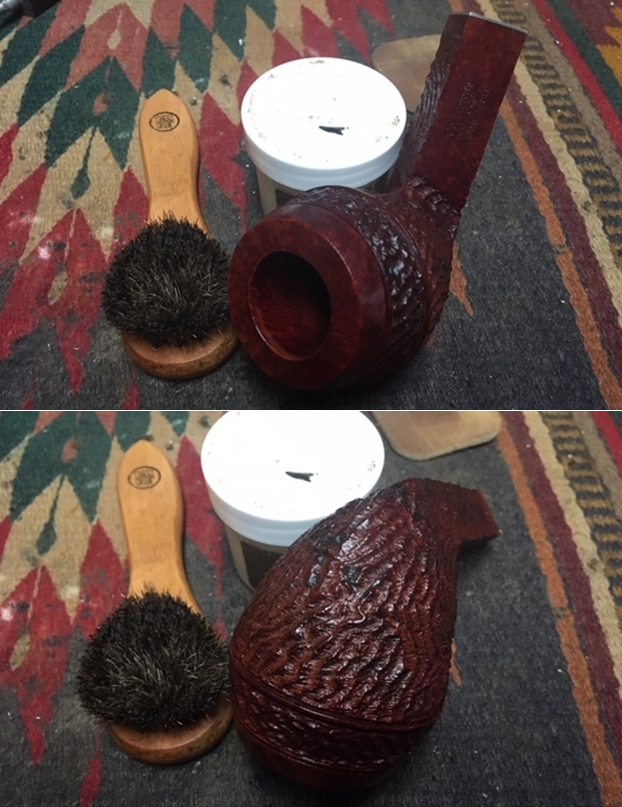
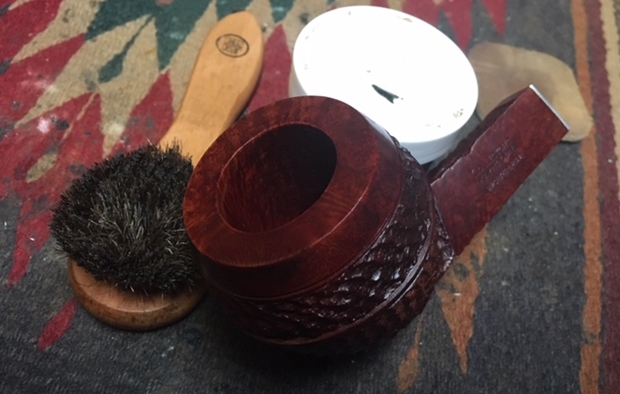 I worked over the vulcanite stem with micromesh sanding pads to remove the marks, scratches and oxidation – wet sanding with 1500-2400 grit sanding pads and dry sanding it with 3200-12000 grit sanding pads. I wiped it down after each sanding pad with some Obsidian Oil. I polished the stem with Before & After Pipe Polish – Fine and Extra Fine polishes. I wiped the stem down with a final coat of Obsidian Oil and set it aside to dry.
I worked over the vulcanite stem with micromesh sanding pads to remove the marks, scratches and oxidation – wet sanding with 1500-2400 grit sanding pads and dry sanding it with 3200-12000 grit sanding pads. I wiped it down after each sanding pad with some Obsidian Oil. I polished the stem with Before & After Pipe Polish – Fine and Extra Fine polishes. I wiped the stem down with a final coat of Obsidian Oil and set it aside to dry.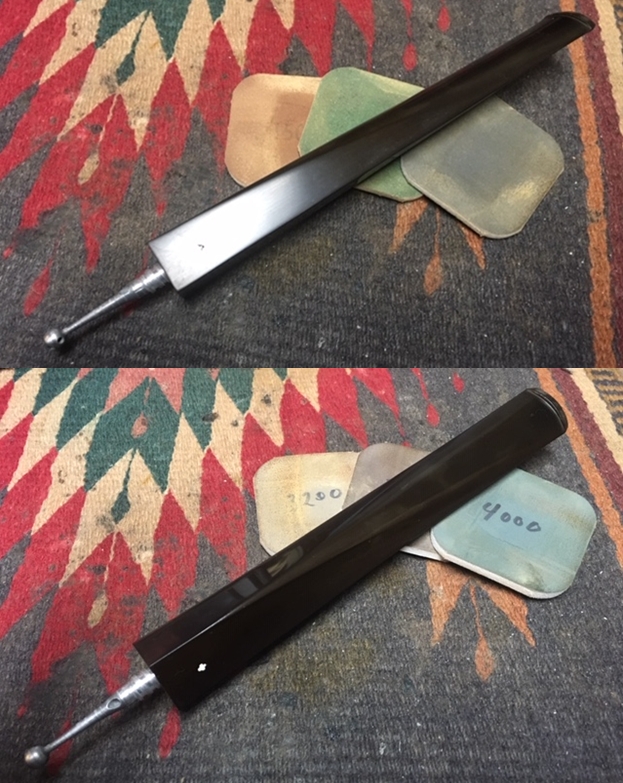
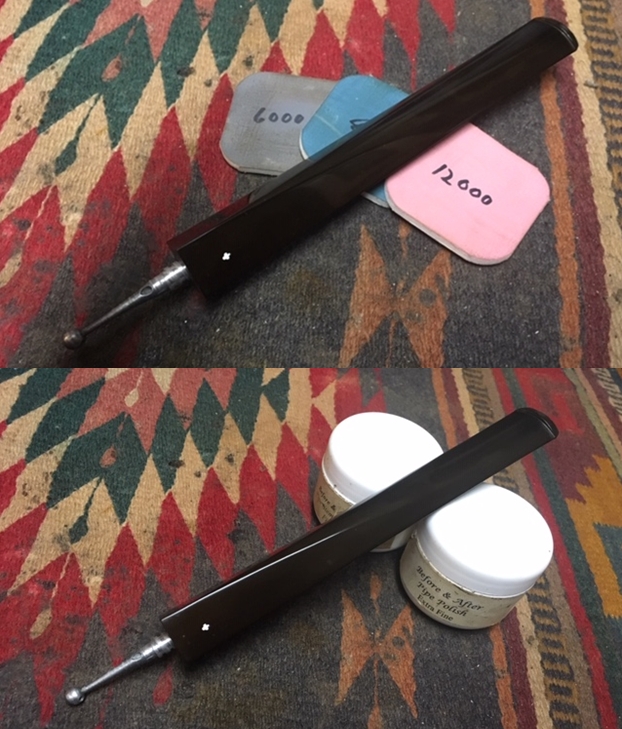 I the polished stem and bowl with Blue Diamond to polish out the remaining small scratches and stubborn patches of oxidation. It also does a great job raising a shine in the hard rubber stems. I gave the bowl several coats of Conservator’s Wax and the stem several coats of carnauba wax and buffed the pipe with a clean buffing pad to raise the shine. I hand buffed it with a microfiber cloth to deepen the shine. The pipe polished up pretty nicely. This turned out to be a beautiful pipe in terms of shape and finish for one that is so large. The finished pipe is shown in the photos below. This huge magnum from 1951-1954 is 11 inches long and over 3 inches tall. The outside diameter of the bowl is 2 inches and the chamber diameter is 1 inch. It is a true Magnum Sized pipe. The craggy grained sandblast finish holds a perfectly drilled and centered airway in the bottom of the bowl. The long, large Drinkless Balled Kaywoodie 4 Hole Stinger System is flawless and the stem aligns perfectly. The fact that the inside of the bowl has been sanded smooth and has a light stain coat is just proof of the NOS (New Old Stock) condition of this beauty. Thanks for walking through the restoration with me as I worked over this older Collector’s Kaywoodie. I am still undecided what I am going to do with this pipe. In all my years of pipe restoring I have never come across a Collector’s Edition pipe like this and probably never will again. That alone makes me hesitate in selling it too soon. Thanks for looking.
I the polished stem and bowl with Blue Diamond to polish out the remaining small scratches and stubborn patches of oxidation. It also does a great job raising a shine in the hard rubber stems. I gave the bowl several coats of Conservator’s Wax and the stem several coats of carnauba wax and buffed the pipe with a clean buffing pad to raise the shine. I hand buffed it with a microfiber cloth to deepen the shine. The pipe polished up pretty nicely. This turned out to be a beautiful pipe in terms of shape and finish for one that is so large. The finished pipe is shown in the photos below. This huge magnum from 1951-1954 is 11 inches long and over 3 inches tall. The outside diameter of the bowl is 2 inches and the chamber diameter is 1 inch. It is a true Magnum Sized pipe. The craggy grained sandblast finish holds a perfectly drilled and centered airway in the bottom of the bowl. The long, large Drinkless Balled Kaywoodie 4 Hole Stinger System is flawless and the stem aligns perfectly. The fact that the inside of the bowl has been sanded smooth and has a light stain coat is just proof of the NOS (New Old Stock) condition of this beauty. Thanks for walking through the restoration with me as I worked over this older Collector’s Kaywoodie. I am still undecided what I am going to do with this pipe. In all my years of pipe restoring I have never come across a Collector’s Edition pipe like this and probably never will again. That alone makes me hesitate in selling it too soon. Thanks for looking.